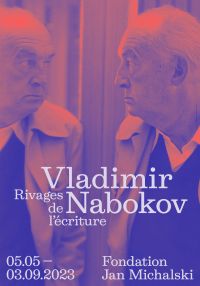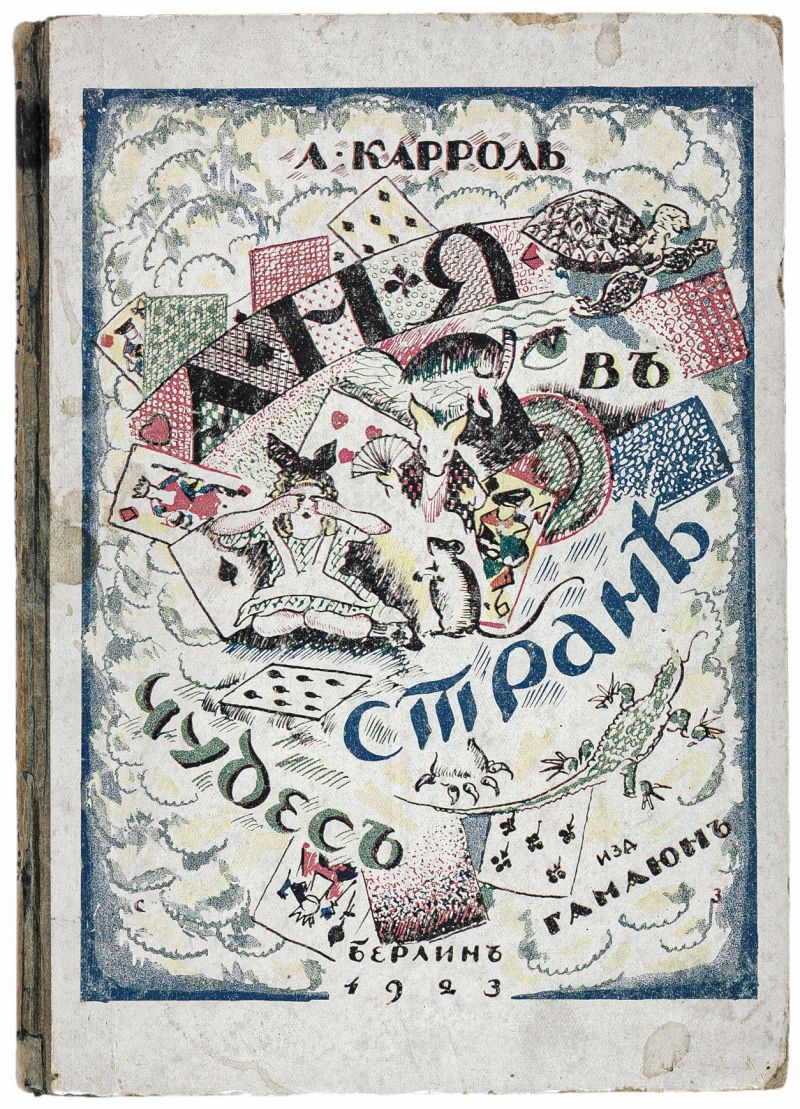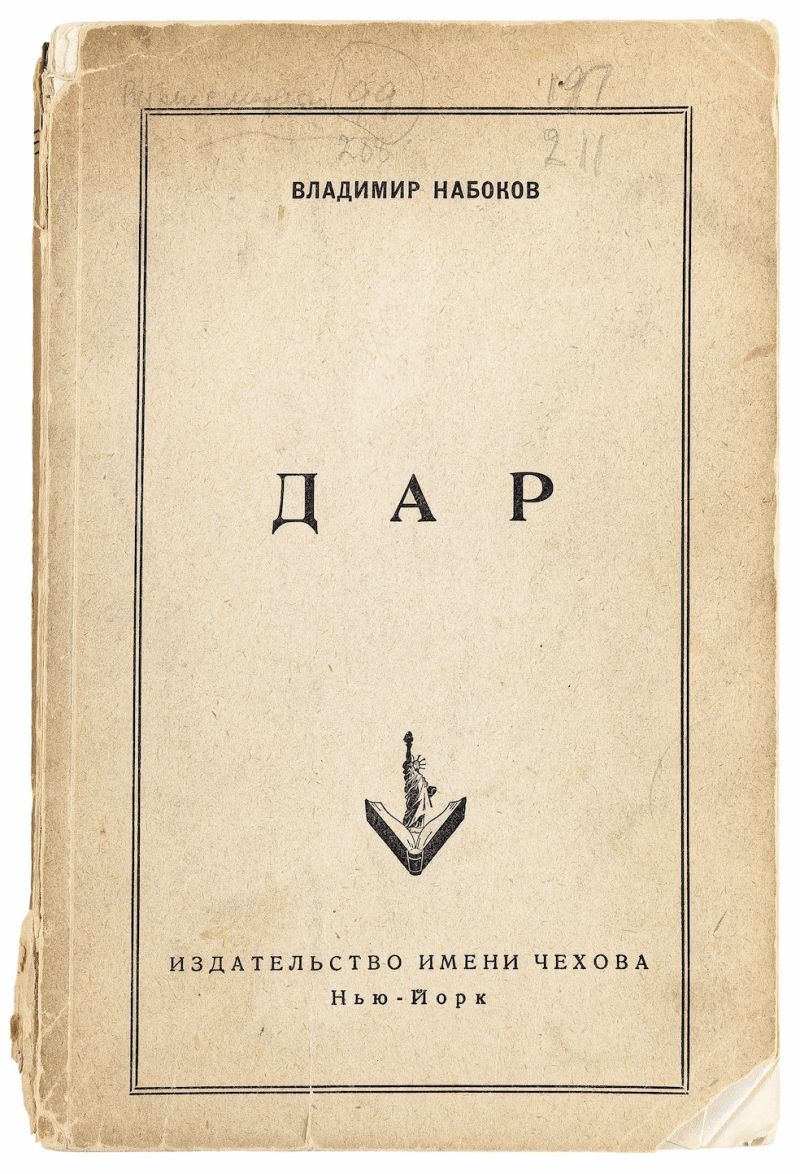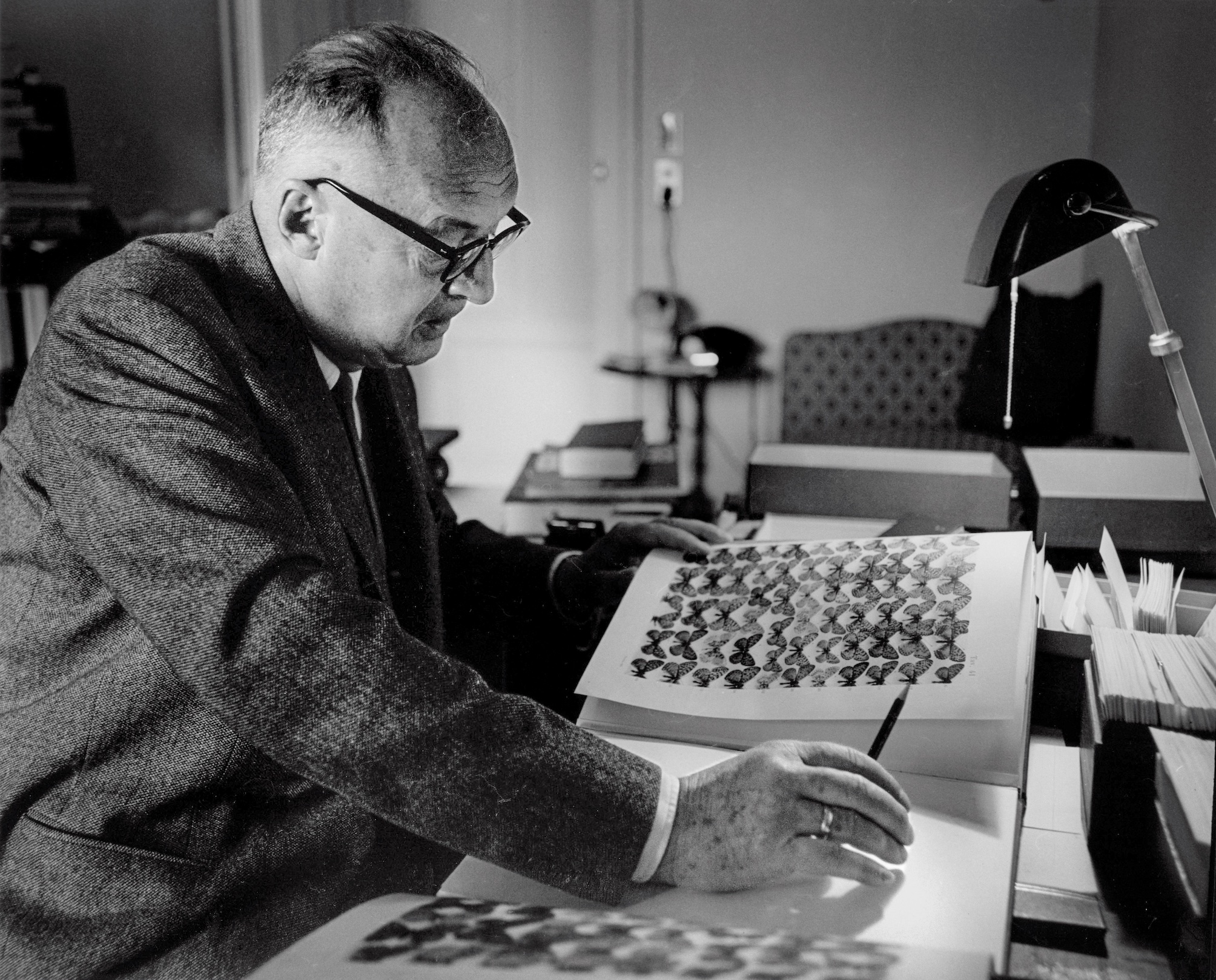
Exhibition Vladimir Nabokov
Rivages de l’écriture
Photo: Yves Debraine, Vladimir Nabokov, Montreux, 1974 © Archives Yves Debraine | Graphic design: Karen Ichters
Introduction
From émigré Russian poet to internationally renowned American novelist, the life of Vladimir Nabokov (Saint Petersburg, 1899 – Lausanne, 1977) followed a path that led from exiles to metamorphoses. Trilingual thanks to an upbringing in Russian, English, and French, and an avid reader from an early age, Nabokov grew up surrounded by the material and cultural opulence of an aristocratic family in Russia.
![Photographe inconnu, Vladimir Nabokov, [1921] © The Vladimir Nabokov Literary Foundation, Inc.](https://fondation-janmichalski.ch/media/pages/archives/vladimir-nabokov/017887dc70-1683106544/1694509u-800x-q80.jpg)
Photographe inconnu, Vladimir Nabokov, [1921] © The Vladimir Nabokov Literary Foundation, Inc.

Lewis Carroll, Аня въ странѣ чудесъ (Alice au pays des merveilles), 1923 | Bibliothèque Diderot, ENS, Lyon © DR
Following the Bolsheviks’ October Revolution in 1917, the expatriate years between Berlin and Paris were ones of great poverty for the young author. Fleeing France just ahead of the Nazis, Nabokov arrived in the United States in 1940 and would later settle in Switzerland (at the Montreux Palace Hotel) in 1961. Bestriding several cultures, Nabokov was also a translator and professor of literature before finally being able to live from his writing starting in 1958 with both the American publication of Lolita (first published in France in 1955) and its swift climb up the best-seller lists, and the sale of the motion picture rights for the novel.
![Vladimir Nabokov, Conclusive Evidence: A Memoir, [première version d’Autres rivages], [1950-1951] © The Vladimir Nabokov Literary Foundation, Inc.](https://fondation-janmichalski.ch/media/pages/archives/vladimir-nabokov/a6796ca702-1683106608/cat134-800x-q80.jpg)
Vladimir Nabokov, Conclusive Evidence: A Memoir, [première version d’Autres rivages], [1950-1951] © The Vladimir Nabokov Literary Foundation, Inc.

Дар (Le don), Isdatel’stvo Imeni Tchekhova, New York, 1952 | Collection Ivan Nabokoff, Paris © The Vladimir Nabokov Literary Foundation, Inc.
These succeeding moments when history seems to change course beg the question of how one should write. The trajectory of Nabokov’s life and career is an example of the transfiguration of the realities of exile through writing, as his own extensive output wonderfully illustrates, from Mary (1926/1970), The Defense (1930/1964), and The Gift (1938/1961), his modernist masterpiece in Russian; to Pale Fire (1962) and Ada or Ardor (1969), in a way the centerpiece of his fictional universe that combines multilingual wordplay and entomology, stylistic strategies and dizzying mises en abyme.
Through a wealth of items including photographs, drawings, manuscripts, original editions, and correspondence, the show offers us a journey through changes of address, landscapes and escapes, languages and imagery, and the shimmering transformations of the virtuoso writer himself.

Horst Tappe, Vladimir Nabokov, Le Montreux Palace, 1965 © Fondation Horst Tappe | Keystone | Horst Tappe
Guest curators
Marie Bouchet, Agnès Edel-Roy, and Boris Vejdovsky
Collections on display
Vladimir Nabokov papers. Henry W. and Albert A. Berg Collection of English and American Literature, The New York Public Library, Astor, Lennox and Tilden Foundations; Collection of Harry Ransom Center, University of Texas at Austin; Vladimir Vladimirovitch Nabokov Papers, Manuscript Division, Library of Congress, Washington D.C.; Master and Fellows of Trinity College, Cambridge; Houghton Library, Harvard University, Cambridge. Gift of Vladimir Nabokov Literary Foundation, 2017; Fondation Martin Bodmer, Cologny; Bibliothèque de l’Université de Genève (Dépôt de la Bibliothèque de l’Université de Genève); Bibliothèque Cantonale Universitaire de Lausanne; Collection Cinémathèque suisse; Archives Yves Debraine; private collection, Geneva; Bibliothèque Diderot de Lyon; Legs Raymond Lhoste (1993) | Médiathèque de la Communauté Urbaine d’Alençon; Collection Ivan Nabokoff; Collection Agnès Edel-Roy; Collection Marie Bouchet; Collection Alexandre Eltchaninoff; Muséum cantonal de sciences naturelles, Lausanne